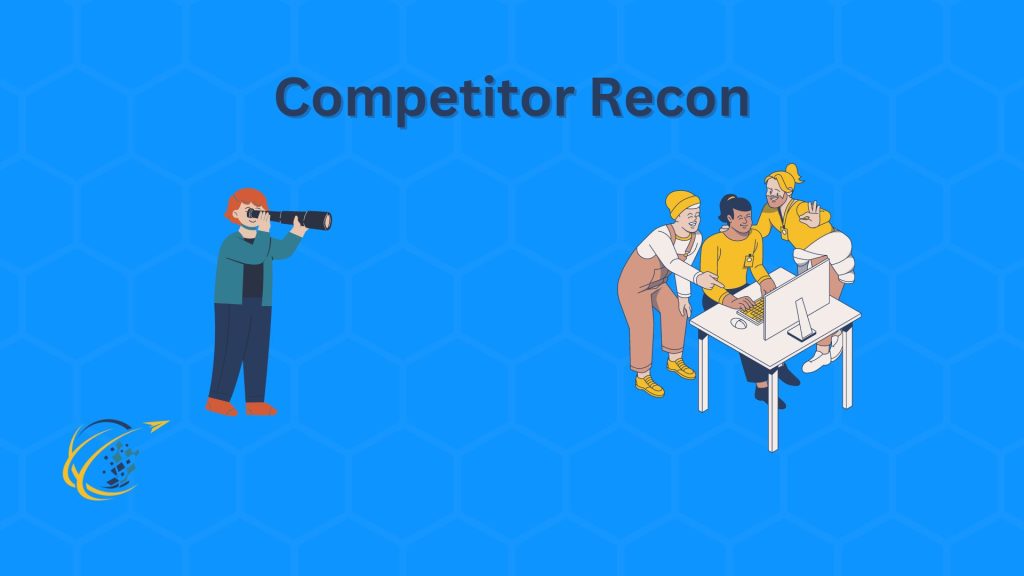Conducting competitor reconnaissance is a crucial aspect of staying competitive in today’s dynamic market. This process involves gathering and analyzing data about rival companies to better understand their strategies, strengths, and weaknesses. By conducting competitor reconnaissance, businesses can gain valuable insights that inform their own strategies, helping them stay ahead of the competition. As market conditions evolve and consumer preferences shift, keeping an eye on competitors becomes even more critical for sustained growth and innovation.
Why Competitor Reconnaissance is Important
Competitor recon offers numerous benefits that directly impact business success. Understanding what competitors are doing well—and where they may be falling short—helps businesses identify opportunities and threats within their industry. Conducting competitor reconnaissance provides critical insights into pricing strategies, product features, and customer engagement techniques that can inform a company’s own approach.
In addition, conducting competitor reconnaissance helps businesses anticipate industry trends and shifts. By studying the competition, companies can spot market gaps that rivals have missed or identify emerging consumer preferences. These insights allow businesses to remain agile and proactive in their decision-making, rather than reacting to changes after the fact. Furthermore, this process helps companies avoid blind spots, improving their ability to mitigate risks and capitalize on opportunities more effectively.
Moreover, competitor reconnaissance ensures businesses stay informed about changes in the regulatory environment. Some industries are heavily regulated, and by observing how competitors adapt to new laws or regulations, businesses can prepare their own compliance strategies. Overall, staying informed about competitor actions contributes to more informed, data-driven decision-making.
How to Conduct Competitor Reconnaissance
Effective competitor reconnaissance requires a systematic approach to data collection and analysis. The first step involves identifying key competitors within the industry. These may include direct competitors offering similar products or services, as well as indirect competitors whose solutions target the same customer needs in different ways. Once the competition is identified, companies can begin gathering data.
There are several ways to collect information when conducting competitor reconnaissance. One of the most common methods is through online research. Websites, social media platforms, and industry forums provide a wealth of information about competitors, including customer reviews, product launches, and marketing tactics. Many companies also analyze competitors’ financial data, when available, to assess their market position and profitability.
Another important tool for conducting competitor reconnaissance is attending industry events such as conferences or trade shows. These events offer opportunities to observe competitors in action, study their presentations, and even network with industry insiders who may provide valuable insights. In addition, companies can monitor competitors’ marketing and advertising efforts to better understand their customer engagement strategies.
While collecting data is essential, businesses must also analyze the information to extract actionable insights. The goal of conducting competitor reconnaissance is to understand the competition’s strengths and weaknesses, as well as identify potential areas for differentiation. This analysis can inform strategic decisions regarding pricing, product development, and marketing campaigns.
Ethical Considerations
While conducting competitor reconnaissance is an important part of business strategy, it’s essential to approach it ethically. Engaging in unethical practices, such as attempting to acquire proprietary information or using deceptive means to gather data, can have serious legal and reputational consequences. Companies should rely on publicly available information and avoid any actions that could be considered corporate espionage.
In addition, businesses should respect competitors’ intellectual property rights and avoid infringing on patents, trademarks, or copyrighted materials. Ethical competitor reconnaissance not only protects a company’s reputation but also ensures long-term business sustainability.
Moreover, it is important to remember that conducting competitor reconnaissance does not mean simply copying what competitors are doing. Instead, the focus should be on learning from competitors’ successes and failures to create unique, innovative solutions. The ultimate goal is to use insights from competitor analysis to refine a company’s own strategy while maintaining ethical integrity.
Integrating Competitor Insights into Business Strategy
Once competitor reconnaissance is complete, it is crucial to integrate these insights into the company’s business strategy. Conducting competitor reconnaissance should inform every aspect of the company’s approach, from product development to customer acquisition strategies. This process allows businesses to make strategic decisions that better align with market trends and customer needs.
For instance, if a competitor’s product gains significant market traction, a company can evaluate whether a similar product is necessary. Alternatively, the company could differentiate by focusing on features or benefits that the competitor’s offering lacks. Competitor reconnaissance also reveals pricing strategies, enabling businesses to adjust prices and stay competitive while protecting profit margins.
Competitor insights are invaluable in marketing. Understanding how competitors position themselves helps businesses refine messaging to better resonate with target audiences. If competitors emphasize price, a business might focus on quality or customer service to stand out.
Additionally, competitor reconnaissance helps businesses prepare for marketplace disruptions. By studying competitors’ responses to economic shifts, regulatory changes, or technological advancements, companies can anticipate challenges and remain proactive.
The Long-Term Benefits of Competitor Reconnaissance
Conducting competitor reconnaissance offers numerous long-term benefits for businesses. By regularly monitoring the competitive landscape, companies can remain agile and responsive to changes in the industry. In today’s fast-paced business environment, those who fail to stay informed risk falling behind.
Additionally, conducting competitor reconnaissance fosters a culture of continuous improvement. By learning from competitors’ successes and mistakes, businesses can refine their own processes and offerings, driving innovation and growth. Furthermore, this practice helps build stronger customer relationships by ensuring that a company’s products or services are always aligned with market demands.
Ultimately, conducting competitor reconnaissance helps businesses remain competitive, innovative, and forward-thinking. The insights gained from analyzing the competition can fuel new ideas, streamline operations, and enhance overall business performance.
Conducting competitor reconnaissance is an essential tool for businesses seeking to maintain a competitive edge in today’s dynamic market. By systematically gathering and analyzing competitor data, companies can refine their strategies, anticipate market shifts, and capitalize on new opportunities. When done ethically, competitor reconnaissance not only keeps businesses informed but also empowers them to innovate and grow. For businesses looking to stay ahead, regular competitor analysis should be a key part of their strategy.


